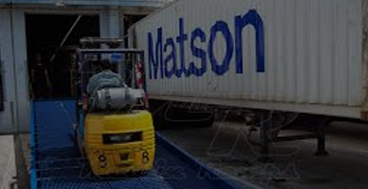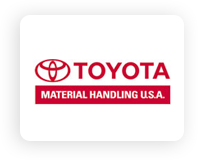When it comes to commercial real estate most people think of offices and retail. This is because they are the most familiar with these types of locations in their lives. Most of the time, they aren’t thinking of all the industrial properties that the items they use everyday are being made.
However, CRE professionals know they can’t ignore the importance of an industrial space. Industrial properties tend to be more stable , long-term investment for owners and a consistently in-demand property type for brokers. If you are going to get involved in industrial property you should make sure that you are an expert. To get you started here is a break down of the 8 types of real estate properties.
Manufacturing
When most people think of manufacturing they think of giant factories constantly making products. On a basic level that is right, since it is where goods are produced and assembled. Manufacturing sites, according to NAIOP tend to be less than 20% office space, have loading docks for trucks, and clear heights of at least 10 feet. However there is a lot of variation, since these properties change a lot depending on their purpose. The two most common ones are:
- Heavy manufacturing: These sites tend to make heavy-duty goods and materials and because of this they tend to be large locations. They usually have tens or even hundreds of thousands of square feet in usable space, along with powerful pieces of equipment, three-phase electrical power, and plenty of space for trucks to load up product. The exact machinery inside is usually customized to the end product, so heavy manufacturing plants need to be renovated when they take on new owners or tenants.
- Light assembly: These sites tend to be a lot smaller and simpler. This is because these sites are usually where products are assembled from smaller parts, stored, and eventually shipped off to be sold to consumers. Because of this they are much easier to configure and change between different tenants.
Storage and Distribution
These properties are built to move items around hold them until they will eventually be sold and shipped to the end user. Size can vary wildly depending on the type of property, but these facilities tend to be around 20% office space at most. There are three common types:
- Distribution warehouse: Just as you would expect based on the name, these warehouses are used to ship goods. Because of this location is incredibly important. For example, if you want to quickly get your products anywhere in the country, you need to be toward the middle of the country, preferably near an airport. But this can change based on the size of the occupying company. For example, Amazon offers same day shipping all over the country in almost every market and to accomplish this they occupy several custom-built, high-tech fulfillment centers and some are bigger than 1 million sq feet.
- General purpose warehouses: These warehouses are used more for storage than distribution. Since products aren’t being moved as often, most general purpose warehouses have a lower door to square footage ratio. This also means that location matters less.
- Truck terminal: These warehouse are entirely devoted to transportation. They’re simply intermediate sites where goods are loaded from one truck to another, and have little to no storage space.
Flex Space
These properties are designed with flexibility for usage in mind for the occupants. They are generally made up of at least 30% office space. There are some specialized flex spaces that hold specific purposes for industrial tenants. Here are three to pay attention to:
- R&D: This stands for research and development, meaning the process by which companies create new products and improve existing ones. These properties vary a lot depending on the tenant and what they’ll be using the space for. If the products are large, like a self driving car, you will need a larger R&D space.
- Data Center: These properties are where companies put the equipment that holds their data, keep their internet up and running, and make cloud storage possible. They average about 100,000 square feet but can get much bigger, the world’s largest being a 6.3 million square foot facility in Langfang, China. The size varies so much because lots of companies choose to lease space to third party data centers.
- Showrooms: These properties are typically not just showrooms but also have a mix of space devoted to offices and warehousing. However, more than half of the space is devoted to showcasing and selling products. The most familiar example would be a car dealership, but there are several other kinds of businesses that need showroom space.
Function over Form
These are just a few of the many industrial properties out there. These are just the most common types that will hopefully help you understand the basics. An important thing to understand is that: the spaces need to be tailored to specific goals for different kinds of businesses.
No matter the business, Medlin Ramps can help tailor the space to fit your needs. If you need a loading dock but don’t have one on the property don’t worry Medlin Ramps can help. Our Stationary Ramps or Mobile Ramps will be able to fill in for a loading dock depending on your needs. Give us a call at 877-4-MEDLIN or fill out the form on our website and we can help you decide on what type of ramp best suits your business.













